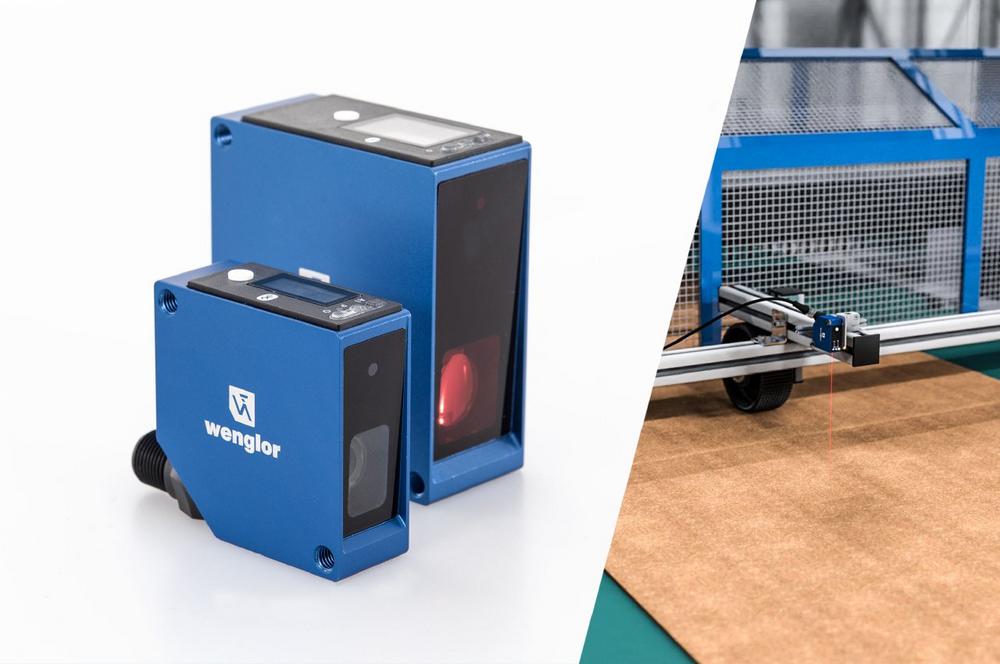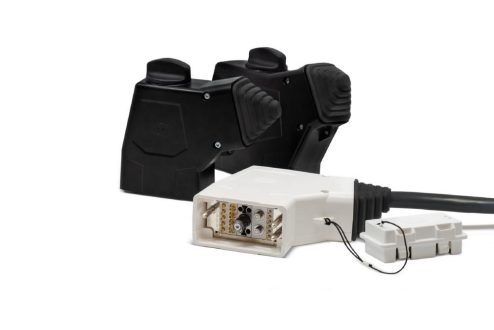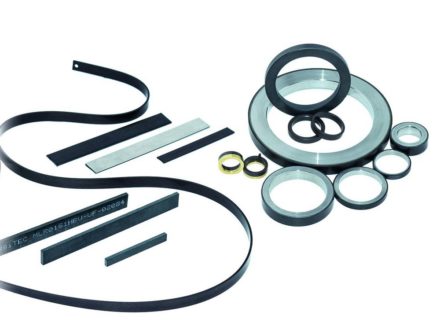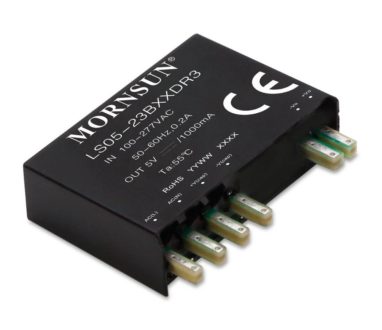
CMOS Revolution: Precision, Performance and Usability in One
TripleA Status: Top Performance Thanks to Top Technologies
The P3 series is much more than just a technical update for wenglor’s CP series, which has been established over many years. With TripleA technology, wenglor engineers have included three technological building blocks that take the performance of the sensors to a new level. The “Aspheric Dual Lens”, i.e. two specially shaped aspherical lenses, ensures improved image quality of the laser light spot and thus increases optical precision. “Adaptive autoexposure” enables the exposure time of the CMOS chip to be adjusted automatically. This makes it possible to expose both bright and dark objects, regardless of the material, to achieve good results. Last but not least, “Active Temperature Control” ensures temperature-stable operation. Several temperature sensors built into the housing continuously measure the internal temperature. The benefits: The warm-up time of CMOS sensors is significantly shorter compared to other sensors of this type. “TripleA technology not only increases the accuracy of the P3 sensors, but also makes them faster and more efficient,” emphasizes wenglor product manager Christoph Lang. “Customers therefore benefit threefold from this innovation.”
Model Variety and User-Friendly Operating Concept for Measurement Professionals
The P3 series comprises 32 models in total, divided into five measuring ranges for small and large distances from 30 mm to 1,000 mm. The high-quality aluminum housing, the glass lenses protected by a PMMA disc and the built-in temperature sensors ensure high temperature stability and short warm-up phases. P3 sensors can be supplied with either red or blue laser light, and are also available as digital or analogue versions. The digital models can be configured directly via teach-in, the analogue models via OLED display or via an integrated Bluetooth interface. Both variants are set via the intuitive operating concept: All sensor settings can be carried out by pressing a button for two or five seconds without operating instructions. The IO-Link 1.1 communication standard with the highest transmission speed COM3 also enables measurement data to be read out quickly. The power of the laser can even be changed to adapt the sensor to individual requirements: The P3 sensors are supplied in laser class 1 and can be switched to laser class 2 via a license. “The P3 series not only features some performance-enhancing technologies, but also impresses with its intelligent overall concept of performance, user-friendliness and fast communication. All of this on a sensor platform is currently unique on the market,” says Lang.
Precision Expert Required: Special Applications with High Requirements
The CMOS sensors from the P3 series are used wherever high optical precision in the micrometer range is required, where there is hardly any installation space available or where fine mechanical fluctuations are part of everyday life. Two sensors calibrated to each other can be used for width or thickness measurement of wood, polystyrene or insulation boards, for example. Just one sensor is sufficient to precisely position sheet material. But even complex objects with irregular, glossy and reflective surfaces in different colors, such as PCBs or weld nuts, can be reliably detected. The sensors from the P3 series are also real experts in double layer detection – for example of wafer-thin metal plates in the automotive industry or metal coffee capsules in the food industry. P3 performance is also required for jump detection of thin layer materials, such as in wafer sheets for biscuit production.
The Highlights at a Glance
• Double aspheric lens for high optical precision
• Adaptive exposure adjustment for optimal object detection
• Active temperature control for high temperature stability
• Robust aluminum housing
• Housing dimensions P design 50 × 50 × 20 mm (P3PC), 71 × 63 × 30 mm (P3EC)
• 32 model variants available
• High precision with reproducibility of up to 0.8 μm
• Low linearity deviation of just 0.08%
• Working ranges between 30 and 1,000 mm
• High measuring rate (2.5 kHz)
• Available with red or blue laser
• Eye-safe laser class 1, laser class 2 can be enabled as an option
• Variants with OLED display or teach-in
• PMMA optic cover for high scratch resistance
• Remote configuration via app via Bluetooth interface for high user-friendliness
• 270° rotatable plug for flexible installation
• Suitable for use in temperatures from –30 to +60 °C
• Integrated IO-Link 1.1 interface
The wenglor sensoric group develops innovative sensors, safety systems and machine vision products with intelligent interfaces and software for industry all over the world. Founded in 1983, wenglor is one of the world’s key high-tech providers of automation technology. The solutions from the wenglor sensoric group enable the trends of Industry 4.0 as well as Internet of Things, 3D technologies and robotics. In doing so, they conserve resources and increase the quality and safety of the manufactured products.
The second-generation owner-managed family business is represented worldwide with 26 subsidiaries in 46 countries.
In addition to the company headquarters in Tettnang, the group of companies with over 1,000 employees also develops and produces its multi-patented products in Munich, Sibiu (Romania), Perth (Scotland) and La Chevrolière (France)
wenglor sensoric group
wenglor Straße 3
88069 Tettnang
Telefon: +49 07542 5399 0
Telefax: +49 07542 5399 988
http://www.wenglor.com
Pressereferent
Telefon: +49 (7542) 5399-718
E-Mail: fabian.repetz@wenglor.com
![]()




